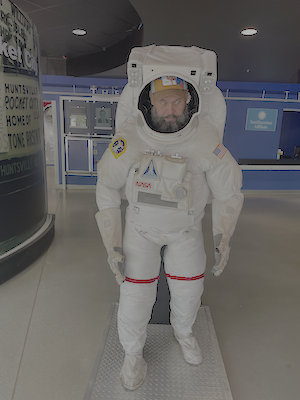The Human Behind the Vision

Luis Portalatin-Gauthier
Five years ago, I sat in yet another strategy meeting where my insights about grant patterns and organizational efficiency were politely acknowledged, then promptly ignored. As the finance and operations manager at a national philanthropic intermediary, I had a bird's eye view of how resources flowed through the movement ecosystem. I could see which approaches worked, which didn't, and why certain organizations thrived while others struggled. But my observations rarely made it into strategic conversations.
Why? Because I wasn't a "vanguard"—one of those charismatic leaders who command rooms and articulate vision with compelling language. I was support staff, managing budgets and processing data while the "real" strategic thinking happened elsewhere. This dynamic nearly broke my spirit. And worse, I realized it was breaking our movements.
Working with grassroots organizations across Philadelphia, I watched brilliant insights get lost because they didn't come wrapped in the right rhetorical package. Community organizers with deep understanding of local dynamics couldn't translate their observations into "strategic language." Finance coordinators who saw patterns across multiple funding cycles felt intimidated contributing to discussions dominated by senior staff with advanced degrees.
The breaking point came when I realized the system wasn't designed to elevate people like me—or the countless others whose expertise didn't fit traditional leadership molds. Despite managing complex financial systems and identifying patterns that could inform broader strategy, I was repeatedly passed over because my knowledge didn't come with the right credentials or communication style.
That's when I understood something revolutionary: strategic thinking isn't actually scarce. It's abundant, flowing throughout our organizations, but we've only built pipes to certain locations. The finance coordinator notices grant reporting patterns that could streamline operations. The newest organizer sees community dynamics that could reshape campaign approach. The data manager identifies trends that could inform policy advocacy. But most organizations waste this collective intelligence because we treat strategic participation as an exclusive rather than inclusive process.
When AI emerged as a practical tool rather than science fiction, everything clicked. Here was technology that could amplify any voice, regardless of communication style or positional authority. AI doesn't create vanguards—it eliminates the need for them by making strategic thinking accessible to everyone who cares about the work.
"The future of movement effectiveness depends on collective intelligence, not individual brilliance. When we democratize strategic thinking throughout our organizations, we don't just improve our operations—we model the participatory democracy we advocate for in the broader world."
My work now focuses on helping organizations recognize that their most valuable resource isn't charismatic leadership—it's the distributed wisdom of everyone committed to justice. AI becomes revolutionary not when it makes us more efficient, but when it helps us tap into collective intelligence we've been leaving on the table.
This isn't about replacing human expertise or eliminating the need for experience and skill. It's about creating platforms where different kinds of knowledge can contribute to shared strategic thinking, where the person managing your data can influence program design, where community insights from any level can inform organizational direction.
The organizations that embrace intelligence democracy—where strategic thinking becomes abundant rather than scarce—consistently outperform those trapped in vanguard models. They make better decisions faster, respond more effectively to community needs, and embody the values they advocate for externally.